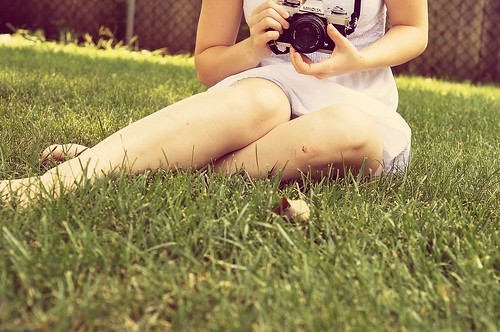Gather all the information you can about different photography techniques to help ensure that you are ready to excel at taking any kind of picture. Common mistakes pop up over and over, but they need not to. Learning a bit more about photography will let you avoid missing the perfect shot.
Try new things, and don’t fear trying new techniques. Personal style should be in a good photograph to express your point of view. Avoid recreating certain famous photographs to see how your view differs from that of the original artist. Using your creative skills, try using some fresh angles.
Always look at the photos of others to be inspired. When you spend time looking at other photographers’ work, you will be able to see many different ways to capture an image.
Always pack your photography equipment with great care. Pack however many lenses you anticipate using, and don’t neglect to throw in cleaning accessories and backup batteries. Be sensible about the limitations that your mode of transport will present, and try to take along only what you are sure you will need.
Traveling presents many opportunities for good photos. Be open for possibilities from the moment you begin your trip. Trips provide a great place to shoot some very interesting photography. Take pictures at different stages of your journey, for instance in airports.
Throughout life, we are coached on making things centered and even. We value perfection, so if you’re trying to create great photos, frame your subject so that it is slightly off-center. Beware of auto-focus features that lock in to whatever is in the center of the lens. Use manual focus and then lock prior to clicking your photo.
Use limitation to help you become more creative. As an example, have a specific goal where you only shoot on particular type of image, perhaps something called “sweet.” Don’t allow yourself to quit until you have shot one-hundred different pictures that are focusing on this same concept. By doing this, you train yourself to create unique photos under the circumstances you have created.
White is the worst color to be wearing in photographs, despite popular opinion to the contrary. Cameras whose automatic features are enabled will often scan all of the shades and tones that appear in the photo. The contrasting background will make the white clothes stand out instead of looking washed out.
Once you decide to take a photo, hurry up and do it. You never know when that “perfect” moment can disappear, so be prepared to get it at any moment. You can easily lose the attention of your subjects if you delay the shot, and the perfect moment is then lost forever. If you spend too much time worrying about your camera settings, you may find that your shot opportunity is long gone.
Filters are helpful extensions that you put onto camera lenses. Simply screw them onto your lens in order to get different effects. A UV filter is the type that is most commonly used. This type of filter will protect your lens from direct sunlight and it’s harmful UV rays. It will also shield your lens from being damaged if it were to be dropped.
You have to know about sharpness and where in the shot it will appear. As a rule, this sharply focused part of the photographic image will be in its center. Sharpness is not as high around the edges of a picture.
Speed Allows
Use your shutter speeds creatively. A fast speed allows you to capture a precise picture of a moving object, but try experiencing with slower speeds, perhaps 1/30. For example, suppose you are preparing to photograph a bicyclist in motion. A slow shutter speed allows you to capture the object clearly while the background is horizontally streaked.
It’s clear that you can improve your photo taking skills more easily than you think. You must do your research, and practice to try and get better skills consistently. The improvement in your photographs will be well worth the effort.
